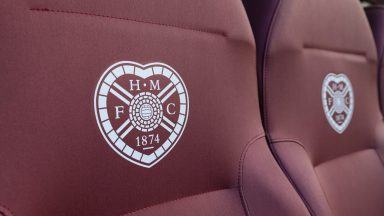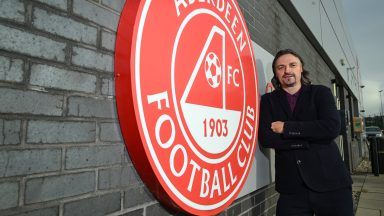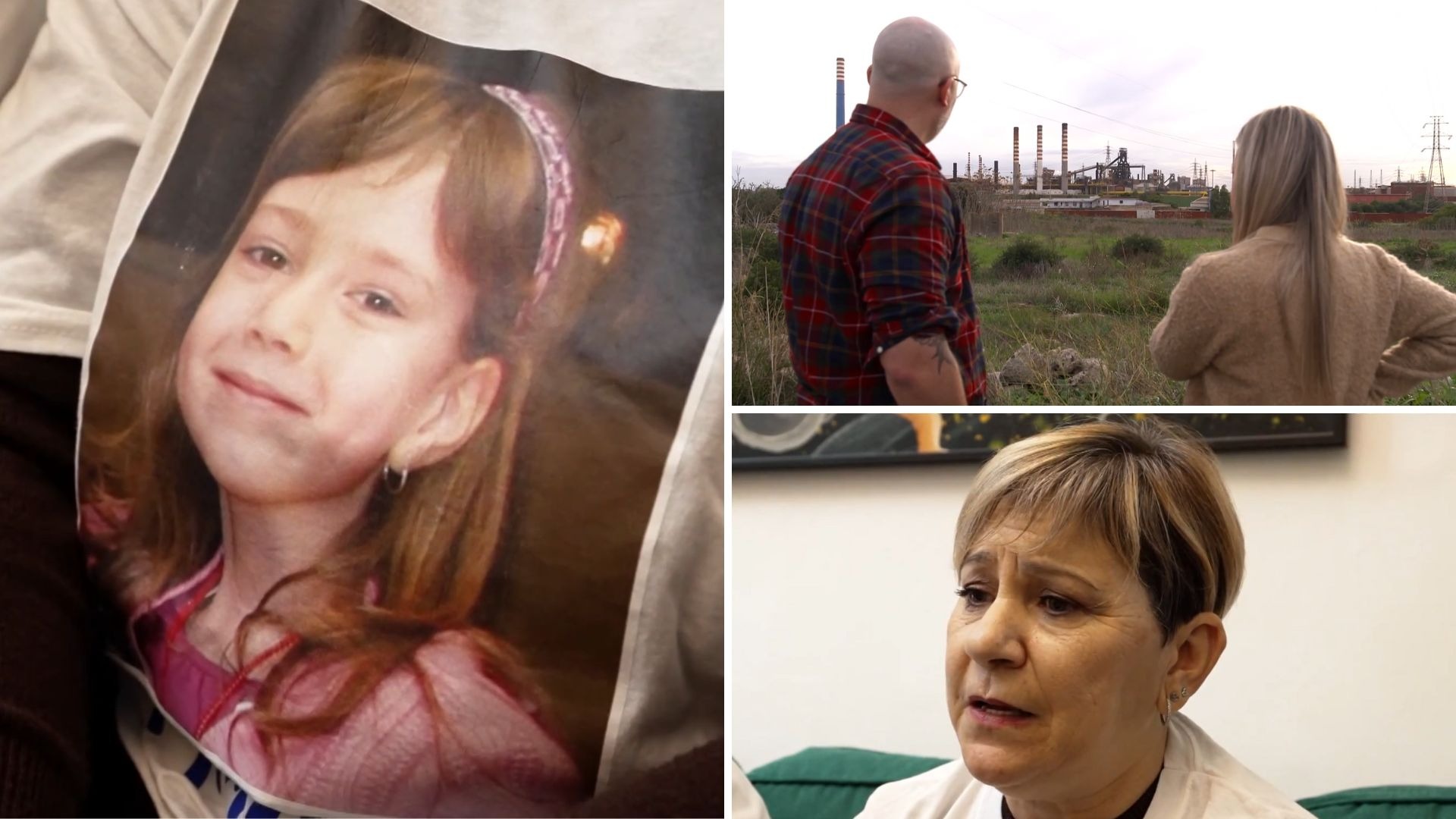The Scottish Football Association (SFA) is celebrating its 150th anniversary on Monday, a significant milestone in the history of the body governing our national sport.
A series of special events are being held across the country to mark the sesquicentennial anniversary of the first international football match, the founding of the SFA and the first season of the Scottish Cup.
The SFA was formed during a meeting at Dewar’s Hotel in Glasgow on March 13, 1873. In doing so, it became the second-oldest national association in world football.
As part of the year-long 150th celebrations, the SFA is now opening the archives of the Scottish Football Museum and sharing thousands of pages of historical records dating back to the earliest days of Scotland’s national game
STV News takes a look back at the SFA’s colourful history, which encompasses periods of seismic change, rapid progress, moments that transcend sport and incidents that sparked huge controversy.
The very beginning
Scotland versus England in 1872 was the match that sparked international football.
Held on St Andrew’s Day that year, it has been officially recognised by FIFA as the first international football match ever played.
It is estimated between 2,500 to 4,000 spectators turned out to watch the game at the West of Scotland Cricket Club ground, paying one shilling each to be part of such a momentous day in the history of football, and indeed the world.

Some 115 official men’s matches have now been played between Scotland and England – with the last meeting also ending in a draw at the UEFA European Championship 2021.
The next chapter in the rivalry will be written in September, as Scotland host England in a special 150th Anniversary Heritage Match to mark the historic first meeting between the two sides.
The Scottish Cup
In 1873, Queen’s Park, Clydesdale, Vale of Leven, Dumbreck, Third Lanark, Eastern Granville, and Kilmarnock united to form the Scottish Football Association.
They created a competition open to all member clubs – the Scottish Football Association Challenge Cup – with 16 teams kicking off the inaugural competition on October 16.
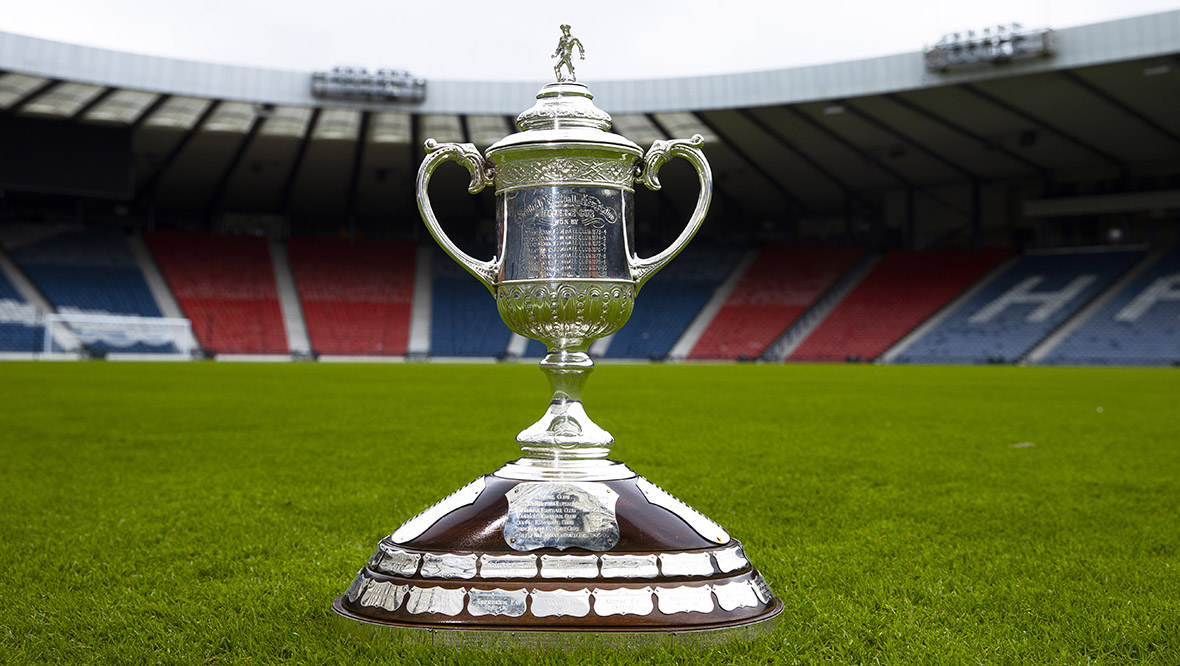 SNS Group
SNS GroupThe Scottish Cup is the oldest existing trophy in the world for the code of association football. The cup and lid of the famous trophy were created by Martin Hall & Company in London in 1873 before being sent up to Glasgow to George Edwards & Sons for the engraving work on the main body of the trophy and the attachment of the footballer on the top.
The total cost of the trophy and 11 ‘silver gilt badges’ was 56 pounds, 7 shillings and 11 pence.
Queen’s Park were the first team to have their name etched on the trophy, beating Clydesdale 2-0 at the original Hampden Park on March 21, 1874, in front of a crowd of 2,500.
There have been some incredible moments since – including Arbroath’s 36-0 victory over Bon Accord in 1885, which which still stands as the greatest ever margin of victory in a legitimate game.
Celtic have won the Scottish Cup the most times, with the Parkhead club lifting the silverware on 40 separate occasions.
Rangers are the current holders, having defeated Hearts 2-0 in the 2022 final.
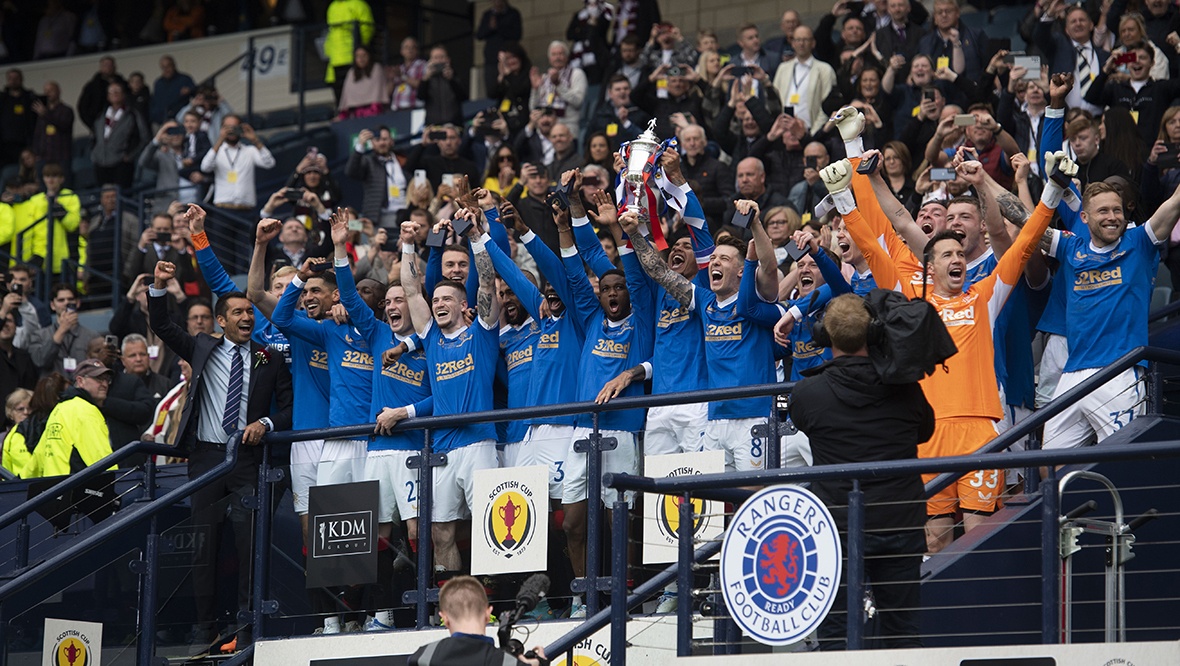 SNS Group
SNS GroupScotland at the World Cup
Scotland did not compete in the first three World Cup competitions – in 1930, 1934 and 1938 – due to a dispute with FIFA over “broken-time” payments to players, which meant the country wasn’t a member of sport’s world governing body.
The SFA, with the football associations of England, Ireland and Wales, withdrew from FIFA in 1928 and did not rejoin as a permanent member until 1946.
The readmission of the Scottish Football Association to FIFA in 1946 meant that Scotland were now eligible to enter the 1950 FIFA World Cup.
FIFA advised that places would be awarded to the top two teams in the 1949–50 British Home Championship, but the SFA announced that Scotland would attend the finals only if they won the competition.
Scotland finished second in that year’s Home Championship so did qualify for the World Cup in Brazil in 1950 but withdrew from the tournament due to the stance adopted by the SFA.
The first time Scotland appeared at a World Cup finals was in 1954, when the tournament was hosted by Switzerland.

In total, Scotland have now appeared at five World Cups but have never progressed beyond the group stage.
Some 30,000 members of the Tartan Army fans gathered at Hampden to give the Scotland squad a huge send-off to the 1978 World Cup in Argentina.
The chant was: “We’re on the march wi’ Ally’s Army; We’re going tae the Argentine; And we’ll really shake them up when we win the World Cup; Cause Scotland is the greatest football team.”
For younger generations of Scotland fans, it’s perhaps unthinkable but the Tartan Army genuinely did think they would emerge victorious in South America. A defeat to Peru and a draw with Iran soon dampened the enthusiasm.
But we’ll always have Archie Gemmell’s winner against the Dutch in the final group game, immortalised further in the 1996 Irvine Welsh movie Trainspotting.
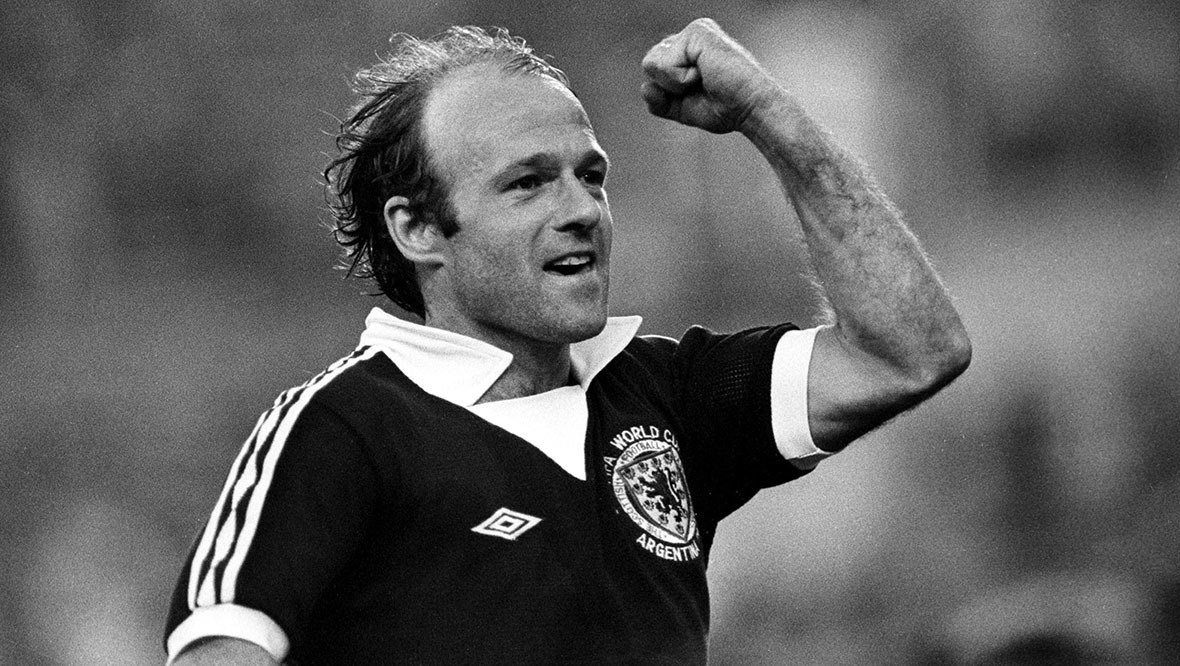 SNS Group
SNS GroupScotland’s other big moment at the World Cup came when they opened the 1998 tournament in France, taking on holders Brazil at the Stade de France in Paris.
The squad memorably wore kilts for the pre-match walkabout but Scotland fell just short, losing 2-1 in front of an audience of billions.
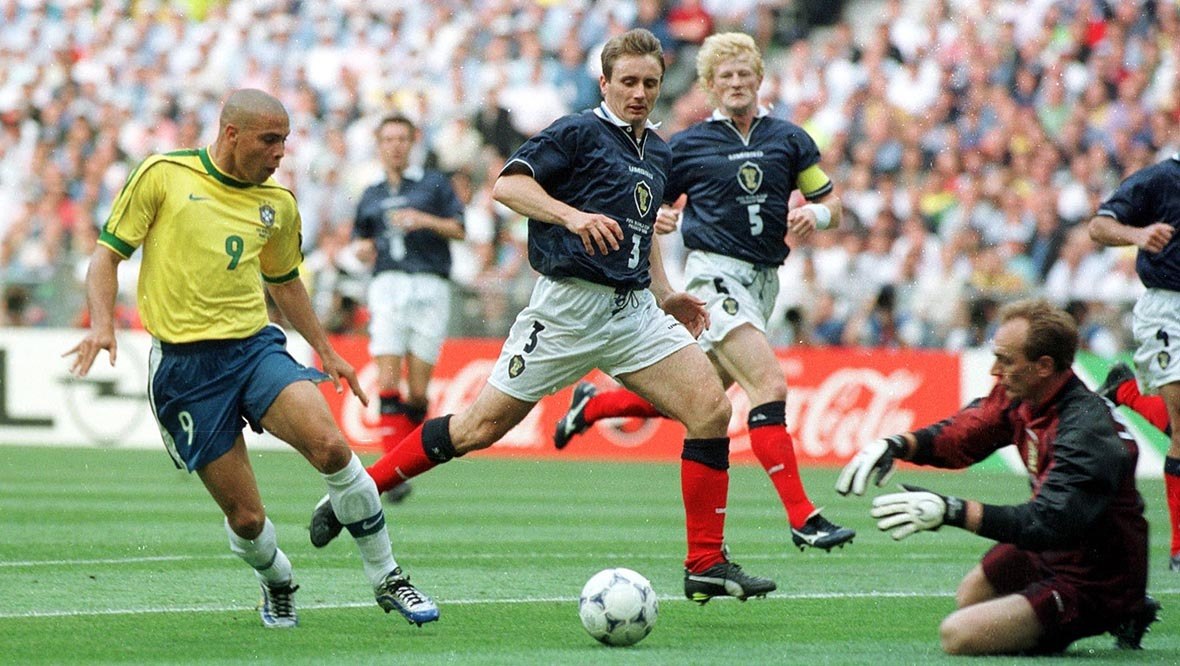 SNS Group
SNS GroupThe women’s game
The story of women’s football began in Scotland and has a history that stretches back almost as long as the men’s game.
Hibernian Park in Edinburgh was the venue for the first known women’s football match to be played under football association rules.
Taking place on the May 7, 1881, less than a decade on from the first ever men’s international match in Glasgow, a team of Scotswomen dismantled England in a 3-0 victory.
But the women’s game took a major step backwards at the start of the 20th century. The SFA placed restrictions on the women’s game and banned member clubs in the 1920s from advocating or even “entertaining” women’s football.
In 1948, the SFA enforced its approach to women’s football by enacting a ban on women’s football teams using the facilities and resources of SFA member football clubs and engaging the services of licensed officials.
Women continued to play football through all of this regardless, but it wasn’t until the 1970s that the situation began to change.
The success of unsanctioned competitions, namely the unofficial women’s world cups in 1970 and 1971, highlighted the interest and potential in the game.
UEFA then held a vote in 1971 to bring unofficial women’s organisations under the banners of their respective national associations. The vote was passed 31 to one in favour. Only one single country, Scotland, voted against.
Things have largely changed for the better with the women’s national team in Scotland. The SFA assumed responsibility in 1998 and Scotland’s women have since reached two major finals – the 2017 European Championship and the 2019 World Cup.
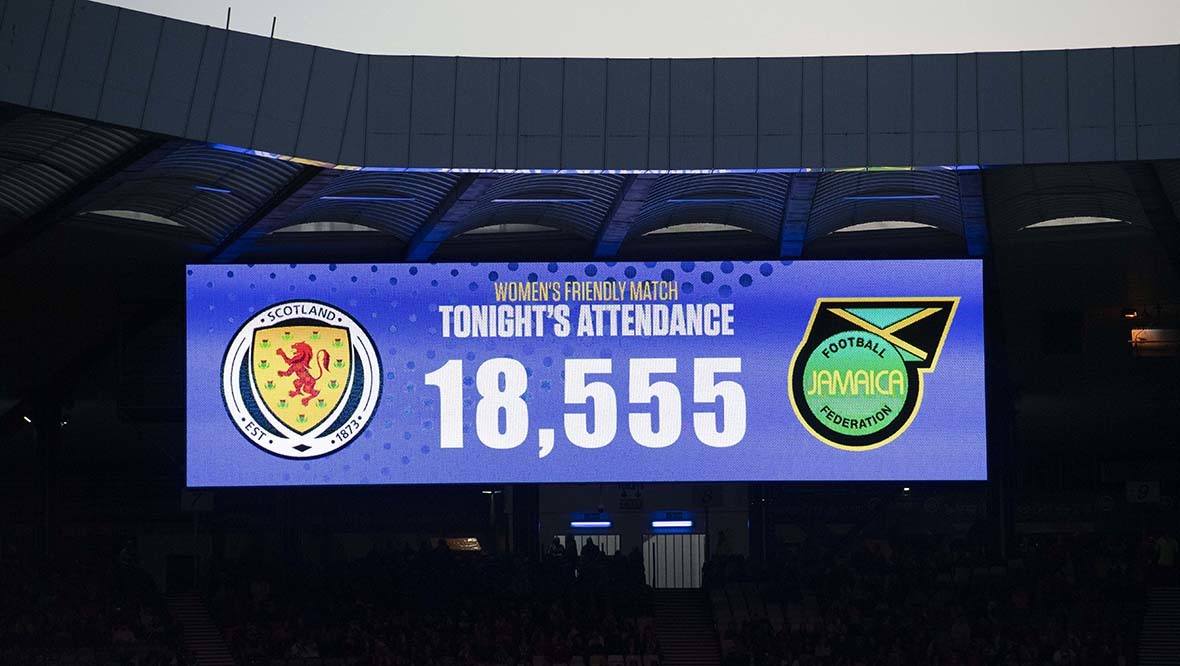 SNS Group
SNS GroupAlmost 19,000 people gathered inside Hampden – a record for a women’s international – to watch Scotland Women’s National Team (SWNT) defeat Jamaica 3-2 before they departed for the 2019 World Cup in France.
Scotland lost their first two games to England and Japan, before exiting the tournament at the first hurdle following a dramatic 3-3 draw with Argentina – a game in which the Scots were 3-0 ahead with just 16 minutes left to play.
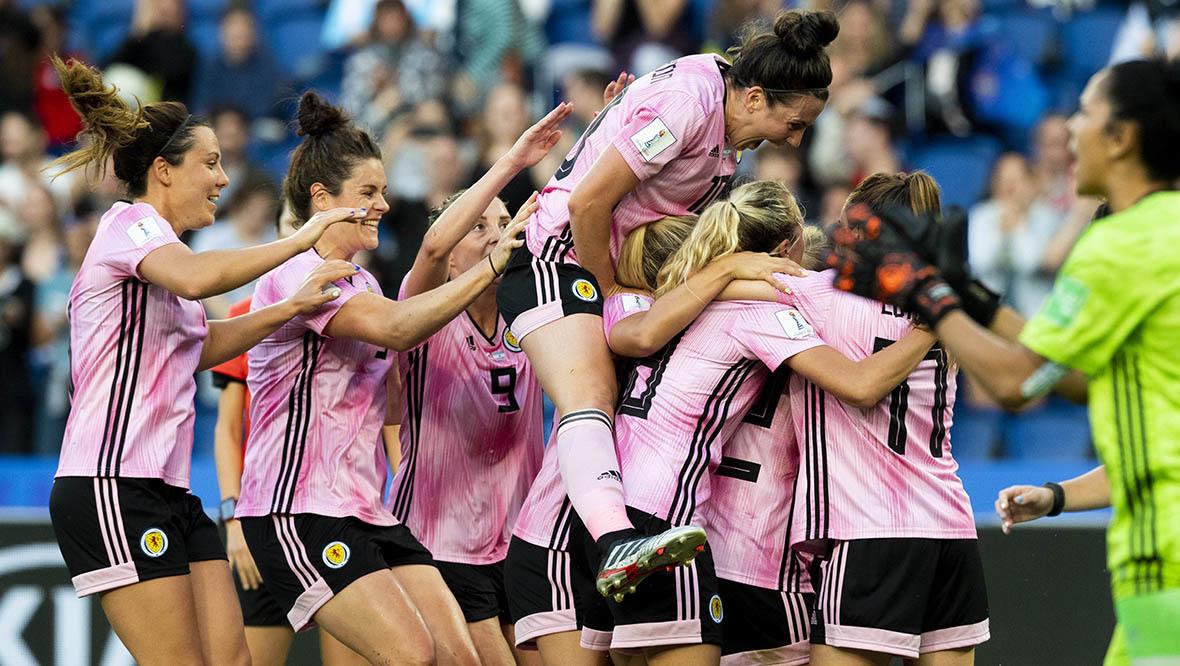 SNS Group
SNS GroupThe situation regarding women’s football in Scotland might have drastically improved over the years, but the relationship between the SWNT and the SFA still has its challenges.
Players have been in dispute with the Scottish FA hierarchy for some time and players are now taking their fight to an employment tribunal.
The squad want to “ensure equality” with the male national side.
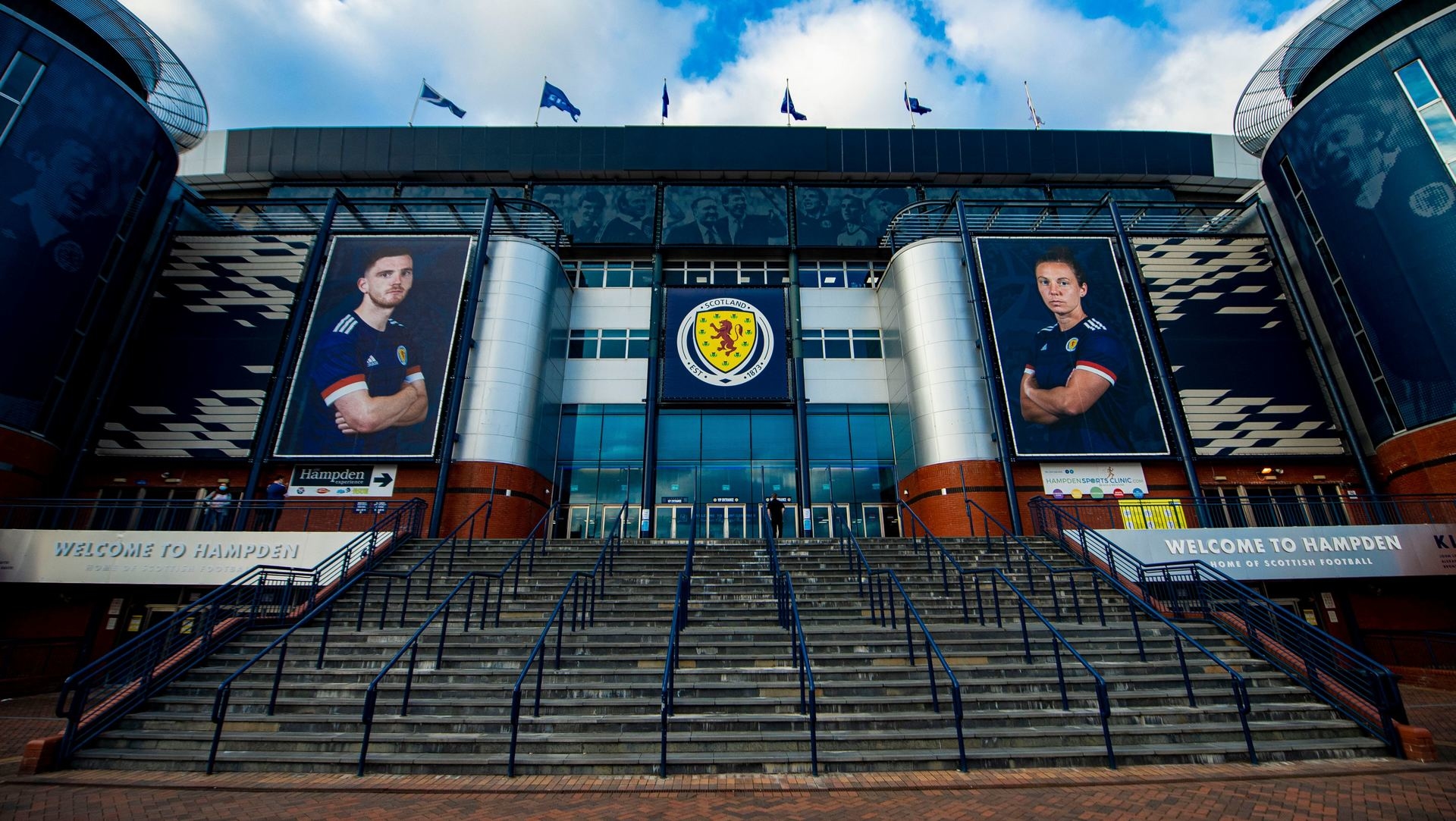 SNS Group
SNS Group“This is about all professional footballers being treated equally,” explained Scotland captain Rachel Corsie.
“After years of iniquity, disrespect, and in some cases abuse, we have a historic opportunity to advance equal pay and to promote equality for women and girls in football.
“This campaign is about parity, and we’ll be seeking to engage with the Scottish Football Association, the fans, and everyone in Scotland’s football community to deliver this long overdue change.”
Spiritual home of Scottish football
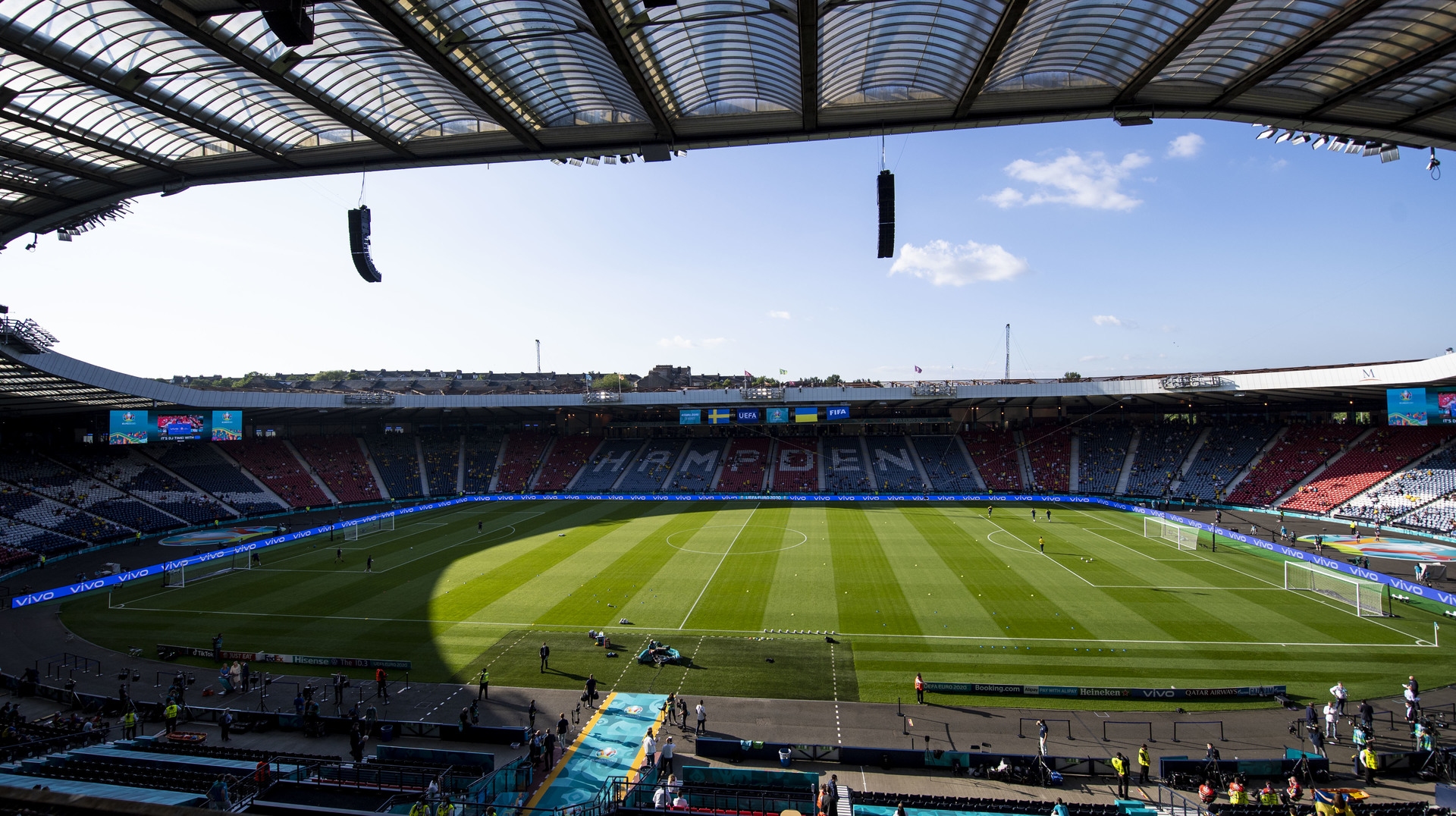 SNS Group
SNS GroupThe SFA has stablished Hampden as the spiritual home of Scottish football and the base for national team.
The organisation has helped to deliver huge games to the country including the European Cup final in 1960, which saw Real Madrid thrash Eintracht Frankfurt in a match that has entered football folklore.

Furthermore, the SFA oversaw a major revamp of Hampden in 1976. The stadium received UEFA elite status, which led to it securing the 2002 Champions League final ad the 2007 UEFA Cup final 2007.
Real Madrid once again provided a moment for the ages in 2002 when Zinedine Zidane scored a remarkable goal as the Spaniards defeated Bayer Leverkusen 2-1 to lift the Champions League in Mount Florida.
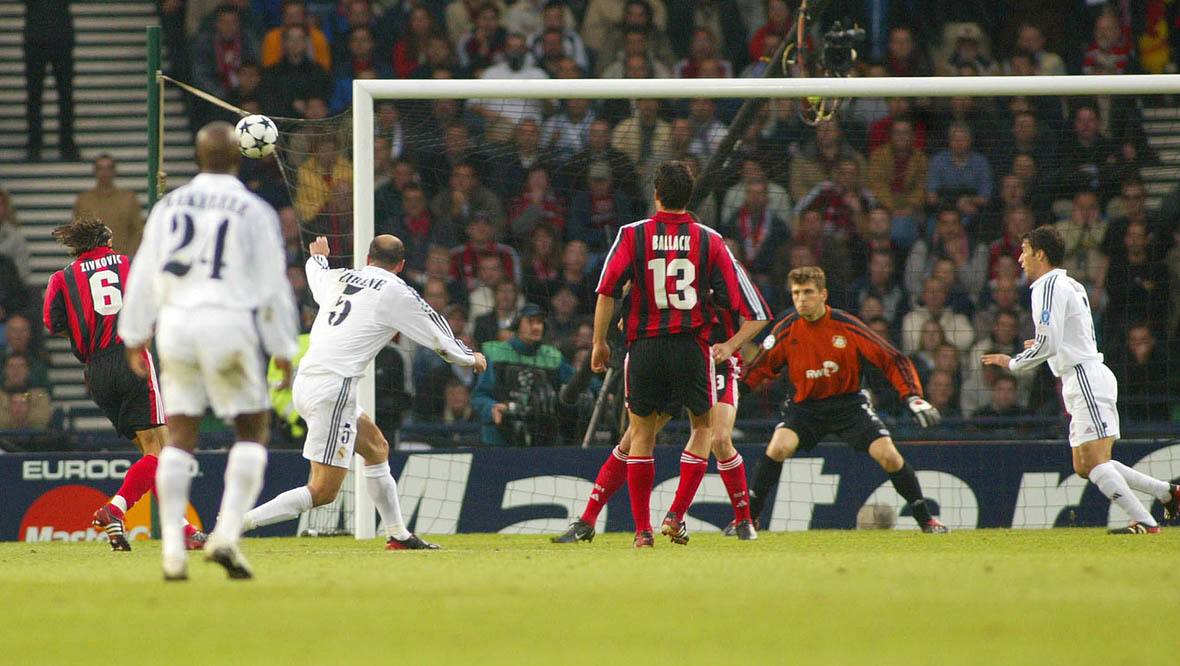 SNS Group
SNS GroupHampden was also one of the venues for Euro 2020, which actually took place the following year after being delayed due to the coronavirus pandemic.
Scotland, of course, qualified for that tournament – ending a 23-year exile from the big time.
The Tartan Army weren’t inside Hampden in huge numbers due to limits placed on large gatherings by the Scottish Government.
Those inside did get to witness Scotland’s men score a goal at a major tournament for the first since 1998 in the team’s final group game against Croatia.
Alas, Callum McGregor’s strike was not enough and Scotland failed to progress past the group stage.
 SNS Group
SNS GroupThe Pyramid
Until 2013, Scottish football had no pyramid league system, and as a result it was impossible for clubs in regional leagues to progress into the national leagues, unless a vacancy opened in the Scottish Football League.
Moves towards creating a pyramid system began in 2008 under the tenure of SFA chief executive Gordon Smith, with discussions between the SFA and the regional and junior leagues.
On May 7, 2013, Scottish Premier League clubs unanimously agreed on the introduction of a pyramid structure to Scottish football along with the reintroduction of a single governing body for the 42 clubs competing at a national level, a revised financial distribution model, and the possibility of a promotion/relegation play-off between the top two divisions.
The model opened up the higher levels of the game for ambitious clubs, with the likes of Kelty Hearts, FC Edinburgh, Bonnyrigg Rose and Cove Rangers leaving non-league behind in recent years.
 SNS Group
SNS GroupHowever, the pyramid issue reared its head again last week following leaked proposals that a new ten-team Scottish Conference league including Premiership B teams is under consideration.
The proposals would see the new level of competition introduced just below SPFL League Two in Scottish football’s pyramid structure, and would also feature sides invited from the Highland and Lowland leagues.
Restructure of the leagues to accommodate colt sides from the top flight clubs has been discussed for some time, with Celtic and Rangers B teams having competed for the last two seasons in the Lowland League and Hearts B team joining the league this season.
The proposals have already drawn criticism, with Darvel manager Mick Kennedy describing them as “shameful”.
Kennedy, whose West of Scotland Premier Division side shocked Montrose and Aberdeen in the Scottish Cup this season, wrote on Twitter: “Only in Scotland would league reconstruction to progress our game relegate over 200 clubs, anyone who supports this should be ashamed.
“There a reason the new conference requires no voting power, because they already know it’s wrong on so many levels.”
Jim Farry row
The Scottish Football Association has enjoyed many successes since its foundation. But it has not been without its controversies either.
One such occasion came in 1999 when the SFA suspended its chief executive, Jim Farry, following a row over the transfer of Celtic striker Jorge Cadete three years earlier.
He had been in dispute with then Celtic managing director Fergus McCann over the Portuguese star’s move to Parkhead.
 SNS Group
SNS GroupCeltic had said the SFA delayed the player’s registration, leaving him ineligible to play in a Scottish Cup semi-final tie against Rangers, which the Ibrox club won 2-1.
Following a meeting of the SFA Council, he was sacked for “gross misconduct”, bringing to an end his nine-year term at the helm.
Farry had courted controversy during his career at the helm of the SFA helm and survived several calls for his resignation.
One of his most troubled passages involved the decision to sanction the playing of a Scotland World Cup qualifying match on the day of the funeral of Diana, Princess of Wales.
Referees strike
Refereeing in Scotland came under intense media attention in 2010 after a controversial incident during a match between Dundee United and Celtic at Tannadice.
When the score was level at 1–1, referee Dougie McDonald awarded a penalty kick to Celtic. After consulting with assistant referee Steven Craven, McDonald annulled his initial decision.
After Craven resigned on October 25, it emerged that he and McDonald had lied to his supervisor, Jim McBurney, and to Celtic manager Neil Lennon about the decision-making process.
McDonald had claimed that he had changed his mind after consulting with Craven, when in fact he had changed his mind himself before consulting Craven.
This revelation prompted an investigation by the SFA, which resulted in McDonald receiving an official warning on October 29, while also upholding the actual decision.
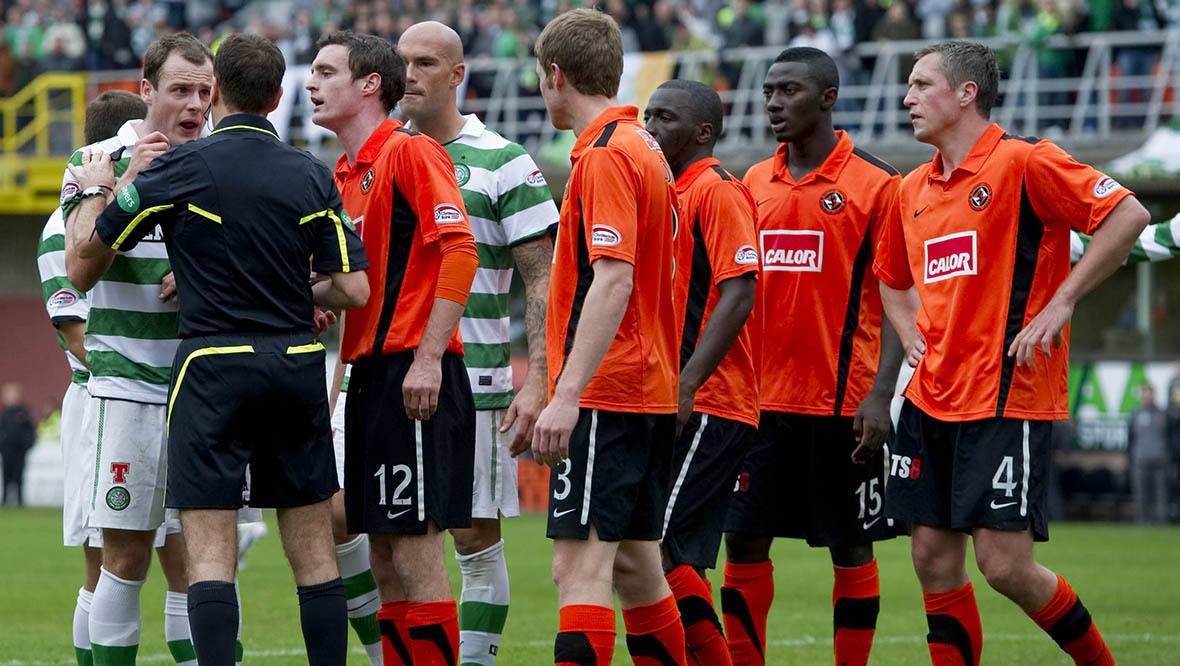 SNS Group
SNS GroupJust a month later, the ensuing controversy and debate over the penalty incident led to referees voting to strike on November 21 in an attempt to achieve substantial changes in the game.
The unprecedented withdrawal of services by top level referees in Scottish football affected 20 matches scheduled for the weekend of 27/28 November, 2010, in the Scottish Premier League, the Scottish Football League, the Scottish Cup, as well as the 2010 Scottish Challenge Cup Final
Rangers financial woes
Former Scottish FA supremo Stewart Regan was at the centre of a media storm in 2012 when he raised concerns of “social unrest” following the SPL vote to reject Rangers’ application to play in the top flight after the club entered administration earlier that year.
His belief was that the club should play in the First Division (the second tier of Scottish football) in the 2012-13 season.
 SNS Group
SNS GroupBut Rangers ultimately were demoted to the bottom tier of the Scottish football pyramid.
Regan later clarified his comments, saying “It’s important to stress that the reference to social unrest was in the context of no Rangers being in existence.”
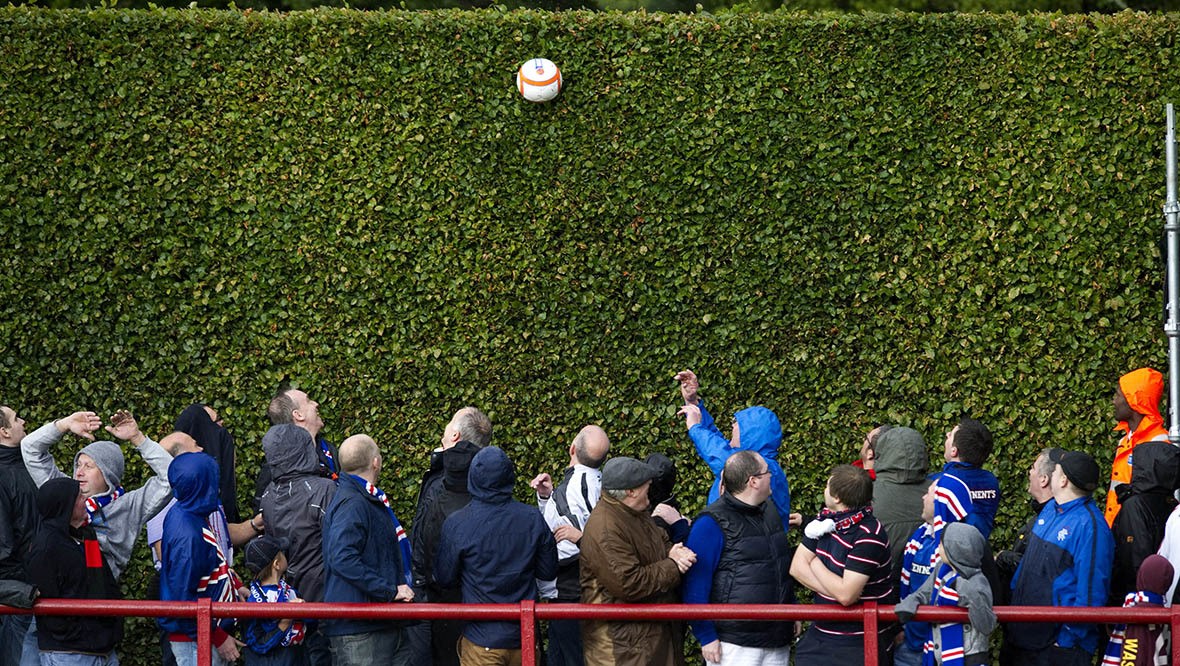 SNS Group
SNS GroupScottish FA chief executive Stewart Regan defended the organisation’s decision not to participate in an independent review of their governance of the Rangers case.
The SPFL had invited the Scottish FA to join them in setting up a review of how both bodies handled Rangers use of employee benefits trusts and subsequent events at Ibrox.
Speaking to STV News in 2017, Regan said that the board at Hampden had undertaken legal advice “at every step of the way” and that changes had been made to their structure and disciplinary procedures over the last five years.
VAR
The use of video assistant referees (VAR) started in Scottish domestic football last October.
The 12 Premiership clubs voted in April, 2022, to introduce VAR, prompting the SFA to step up training programmes and the installation of technology inside the top-flight grounds and at its central hub.
The cost had been a major obstacle but with about 60 domestic leagues around the world already using the system, including in the likes of Albania, Azerbaijan, Slovakia and Slovenia in Europe, clubs agreed to meet the initial £1.2m outlay from their prize money this season on a sliding scale.
 SNS Group
SNS GroupThere have been a range of gripes from managers, players and supporters over certain decisions and the length of time taken for incidents to be checked.
But current SFA chief executive Ian Maxwell insists the system is ultimately resulting in more correct calls being made, adding that he is confident concerns about VAR in Scotland will dissipate once everyone adapts to the technology.
Looking forward
The creation of Scottish Football Marketing was announced by the SFA, Scottish Professional Football League and Scottish Women’s Premier League last week.
The three organisations described the new venture as a “centralised commercial hub to revolutionise the promotion and marketing of the national game in Scotland”.
 SNS Group
SNS GroupA joint statement added that the Hampden-based group would report to a commercial board appointed by the three authorities and be tasked with harnessing a “compelling and unified brand for Scottish football” and increasing revenues from enhanced data collection, sponsorship and licensing.
Maxwell said: “Scottish football offers a compelling and unpredictable narrative on the field. We believe it is time to work smarter off the field, in an increasingly competitive marketplace, to reinforce the magic of our national game.”
New digital archive
The Scottish Football Museum based in Hampden Park is marking the SFA’s 150th anniversary with the opening of a new digital archive, showcasing some of the most iconic moments in the sport’s history.
The new digital archive holds the earliest records of Scottish football, giving a glimpse into the origins of the game in Scotland through Scottish FA minute books and Scottish FA annuals.
More than 5,800 pages of Scottish FA minute books (1879 – 1969), and 900 pages of Scottish FA annuals (1875 – 1900) will be accessible in the archive.
Richard McBrearty, curator of the Scottish Football Museum at Hampden Park, told STV News: “It’s hugely exciting.
“For many years, the Scottish Football Museum has looked after the archives of Scottish football and today, to mark the 150th anniversary of the Scottish FA, we are going to switch on a new digital archive, which will for the first time allow lots of people across the world to view the early archives of Scottish football history.
“We’re probably going to have in the region of about 6,000 individual pages, so it’s the very early minute books from the Scottish Football Association – the earliest one they have is from 1879.
“We’ve also got a full run of the Scottish football annuals – it’s a fascinating series of books that were produced by the Scottish FA from the 1875-76 season right up to the 1899-1900 season, so it gives you a real insight into what was really a turbulent time in the history of football.
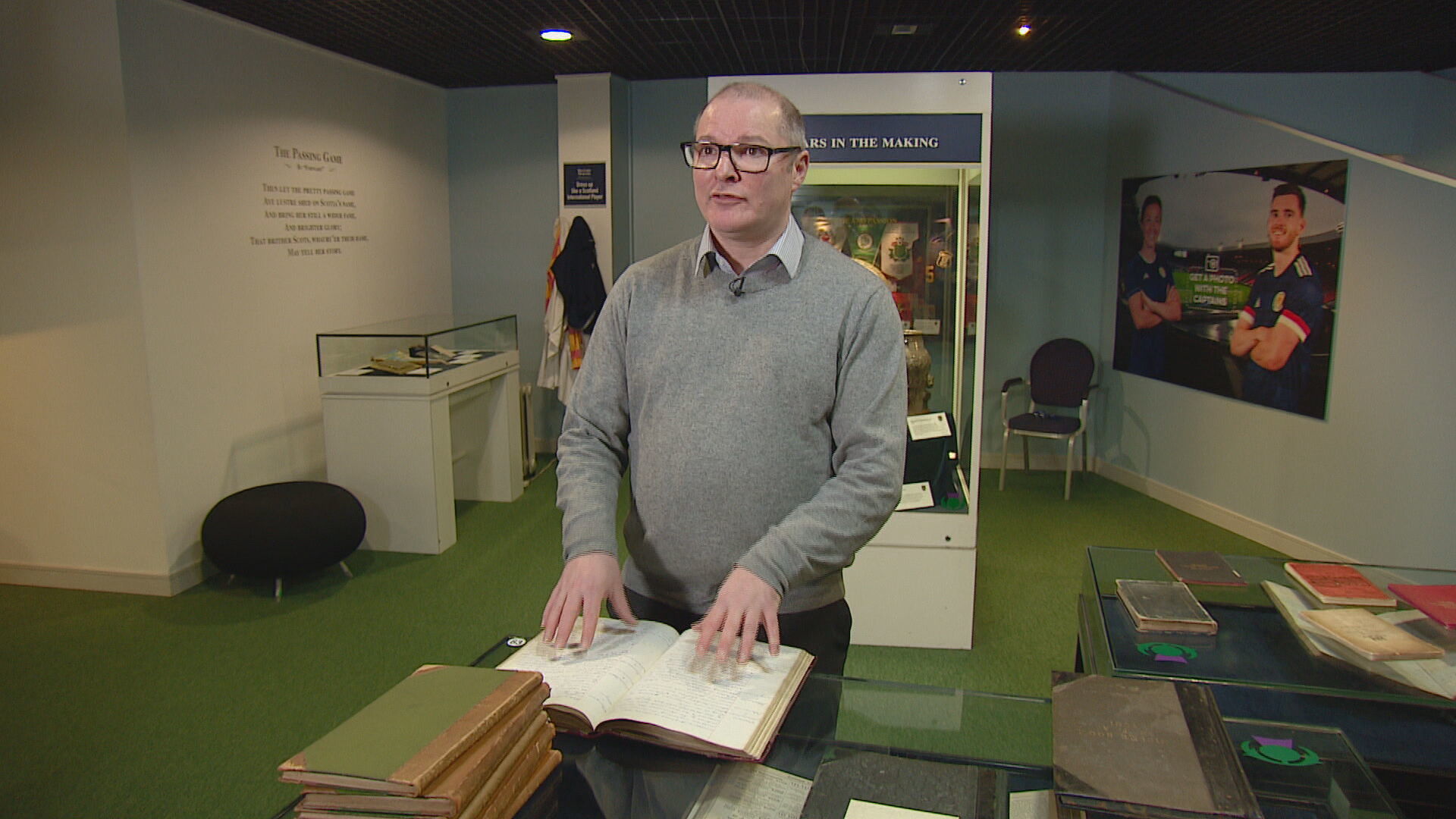 STV News
STV News“It was just really starting to take off across Scotland, across the UK, and it was just starting to become a global game by the turn of the century.
“When you actually look at the early playing rules of football, actually there were two different forms of association football by the very early 1880s. The FA (in England) had their own laws of the game and the Scottish FA had their own laws of the game. There were two subtle differences – offside was different but also the throw-in.
“Scotland’s role in the development of football in the 19th century is hugely important and I think it’s actually largely underplayed.”
Later this year, the inaugural Week of Football – a celebration of the impact of the national game across Scotland and beyond – will take place in June between the women’s and men’s versions of the Scottish Cup final, which will both be played for the first time at the national stadium.
Rod Petrie, Scottish FA President said: “It is a great honour to be President of the Scottish FA 150 years on from the founding moments of the association. Scotland has contributed so much to the world’s game and it’s exciting to see Scotland’s unique place in the history of world football recognised.
“The National Week of Football will offer a legacy to the anniversary and a way to celebrate all the ways football positively impacts our country, setting the course for the next 150 years.”
Follow STV News on WhatsApp
Scan the QR code on your mobile device for all the latest news from around the country





















